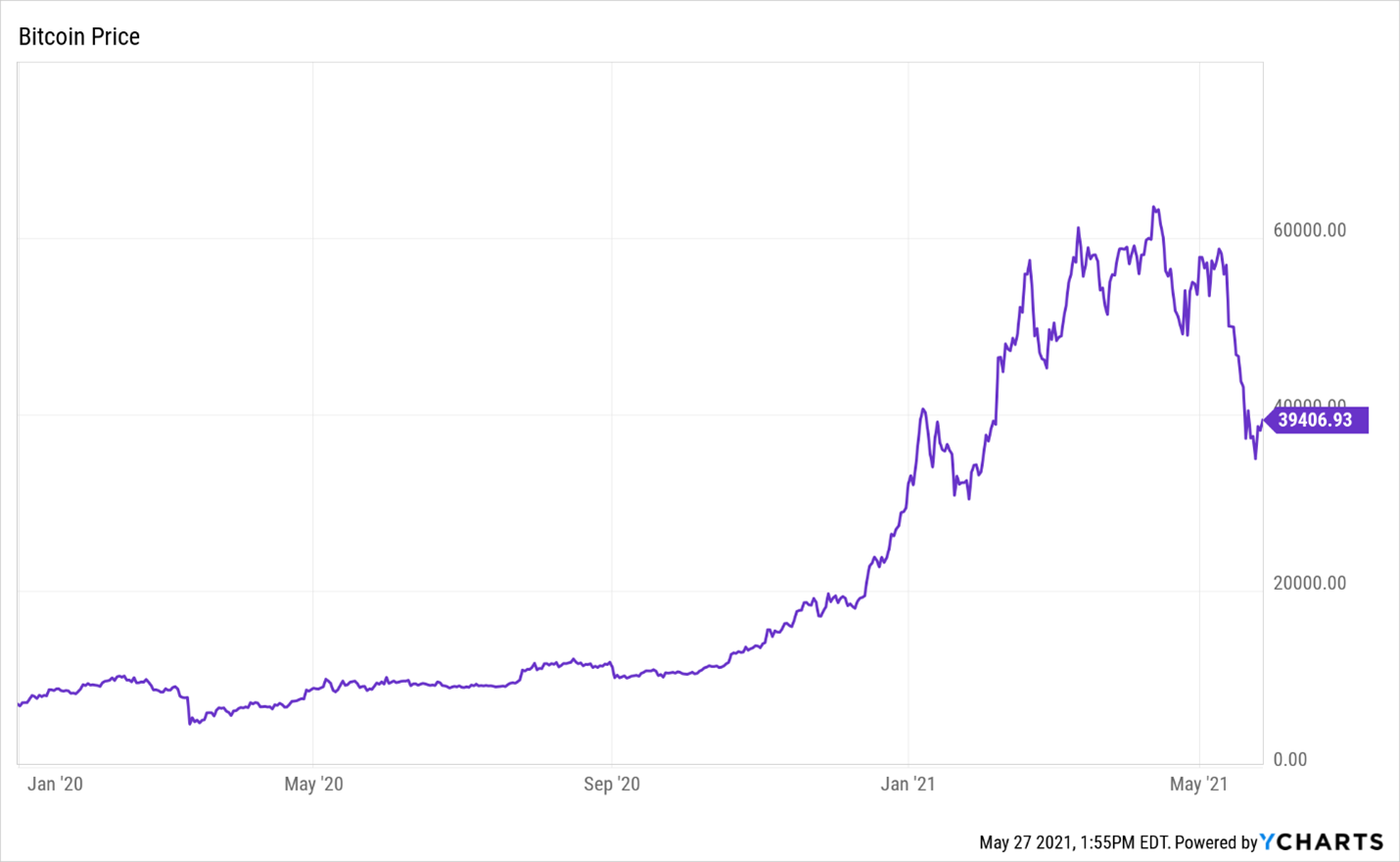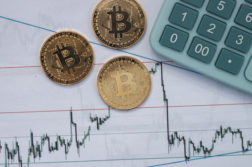BTC-USD has had a dramatic dip as of late
I see this mistake all the time, and it still saddens me.
People buy a stock that has been doing well, and they like its story and its potential. Then, the market throws a short-term curveball their way and the stock starts to sell off.
Their investment goes from fun, exciting and filled with profit potential to scary, dangerous and possibly on its way to being a big loser.
So what do they do?
They bail out.
Yeah, they may intend to get back in, but experience tells me they rarely if ever do. They get caught waiting — waiting to see if it could keep dropping, or waiting to see if a bounce is the real thing or it pulls back again.
By the time the bounce looks real, they don’t want to pay up for it, so they wait for a pullback — and even they may well pay more for it than where they sold it to begin with.
If we take a deep dive into who has done a lot of the selling in Bitcoin’s latest volatility, it sure looks as if it is a lot of those investors.
But who’s buying tells us much more…
Bitcoin’s recent drop has been sharp. No doubt about it.
From mid-April to mid-May, it fell about 50% from all-time highs above $60,000 to just above $30,000.
And … it was still up 3X from where it was last summer. A lot of people seem to forget that … or don’t want to mention it.
A variety of reasons sparked the selloff. Hotter-than-expected inflation dinged stocks and cryptos. Colonial Pipeline paid hackers a ransom in Bitcoin (CCC:BTC-USD) to restart the pipeline, giving fresh voice to the misguided notion that it is a vehicle for illicit activity. (The illicit activity in Bitcoin is noting compared to what it is in dollars.) China reinforced a ban on cryptos after some hope that things were loosening up.
And there is Elon Musk, the brilliant and controversial founder of Tesla (NASDAQ:TSLA), Solar City and SpaceX. Tesla stopped accepting payment in Bitcoin (although I don’t believe anyone ever paid that way), and Musk tweeted about environmental concerns with the power required to mine bitcoins. (I think he was misinformed, and maybe we’ll talk about that in a future MoneyWire.)
It was a bit of a perfect storm, with each event intensifying the selling momentum.
We’ve seen this before. Selling begins selling in the short term. Other investors see this and panic. They sell first and ask questions later.
Some of the selling is short-term traders, who understandably cut their losses and get out. But a lot of it, sadly, is what are called “weak hands” — investors who aren’t really committed to the asset and are easily shaken out when things get bumpy.
We dove down into the recent selling, and this again appears to be the case. Most of the selling appears to have been done by “younger” coins, meaning the most recently purchased.
Some investors — likely new to Bitcoin — got excited about what they saw and decided to buy. When a sharp correction occurred, they panicked and bailed. Unfortunately, I think they took losses in the short term that they wouldn’t have taken if they understood the big picture.
Blockchain analytics firm Glassnode does some good work, and it unveiled Bitcoin’s on-chain activity (basically its trading activity) amid the “Elon Dip” after Musk’s tweets. In its commentary, the firm noted:
“On-chain we can observe a notable bifurcation of reactions, with newer market entrants panic selling and realising losses, whilst long term hodlers [which is the same as “holders” for bitcoin and altcoins] appear relatively un-phased by the news.” (I added the underline for emphasis.)
Another indication that recently purchased coins were sold is the very high number sold at a loss. In fact, Glassnode noted that the number of coins sold at a loss was so high that it hit levels historically marking a bottom. (Longtime readers know that I never invest based on trying to pick a bottom. We can never tell a bottom until it is in.)
You can see on the chart below that after nearly a year of more bitcoins being sold for profits, the trend reversed sharply in the last few weeks. Not quite as sharply as when the Covid-19 panic hit last March, but definitely fast and furious.
There are two sides to every trade, so any guesses who was buying at discounted prices?
The big money.
It sure looks as if some big buyers stepped in based on the over-the-counter desk flows, which is where the institutions trade. Plus, the premium Bitcoin pricing on Coinbase (NASDAQ:COIN) versus other exchanges (like Binance) exploded. The same coin can trade at different prices on different exchanges. A lot of the institutions use Coinbase, so the higher price seen on that exchange indicates a lot of institutional buying in the United States.
Let’s also back up to right before the market tanked on May 19 to see what the smart money was doing. The bearish sentiment on May 17 lasted for just a short period as “whales” decided it was time to buy the dip. A whale owns between 1,000 and 5,000 bitcoins — so roughly $37-$188 million at current prices. That’s the big money, and whales aggressively bought below $43,000.
Business intelligence firm MicroStrategy, one of the first companies to invest its cash in Bitcoin, was one of those whales that took advantage of lower prices. It scooped up another $10 million at an average price of $43,663.
This clearly wasn’t the bottom, but it shows that big-time bitcoin holders were willing to step in around $43,000. Now that bitcoin is under $40,000, I’m sure they are even more inclined to buy.
A firm I respect, ARK Invest, also bought the dip. As did Ray Dalio, the co-chief investment officer of Bridgewater Associates, the world’s largest hedge fund. I believe that is his first Bitcoin purchase.
Regular readers know I am a Bitcoin bull. That hasn’t changed one bit. And I expect even bigger gains from lesser-known altcoins that haven’t gotten 1/100th the attention Bitcoin has.
Here’s something else that hasn’t changed … I expect Bitcoin to hit $100,000. It may fall more before it resumes its march to new highs, but the transformative change enabled by blockchain and cryptos is so big that I am more confident than ever in higher prices.
Bitcoin $100K would be a 2.5X increase from current prices. And select altcoins should multiply their money even more.
That’s the nature of hypergrowth trends, stocks and cryptocurrencies. As long as their potential to transform much of our world remains on track, I expect to see more big gains in the next five years.
Author: Matthew McCall
Read more at: https://investorplace.com/moneywire/2021/05/we-can-learn-a-lot-from-whos-selling-bitcoin-and-whos-buying/









